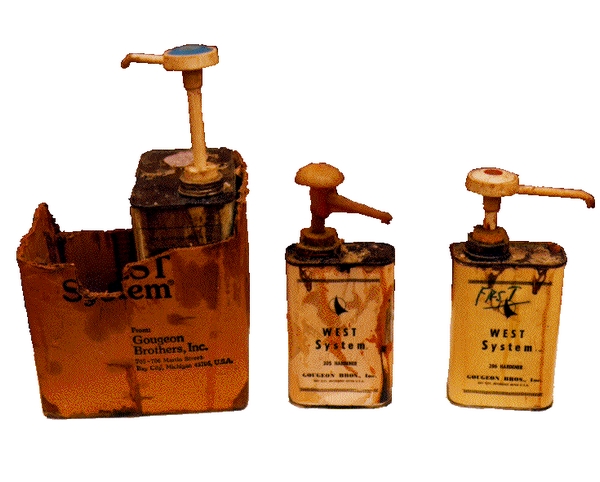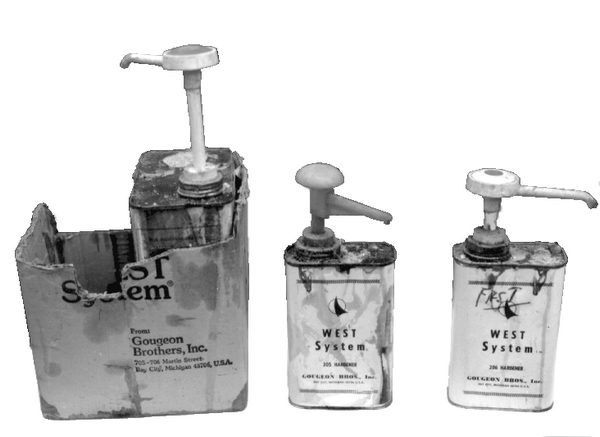
While WEST SYSTEM® epoxy has a long shelf life, age will eventually affect its handling characteristics and cured strength. When stored for very long periods, hardeners may turn darker (reddish to purple), become thicker and give off more odor. 105 Resin may lose some clarity and also become slightly thicker. Use extra care when mixing age-thickened products (stir extra thoroughly), and if color and/or clarity are crucial to your project, buy some fresh resin and hardener for best results. 207 Special Clear Hardener is specially formulated for clarity and flow.Although the cured strength of older epoxy may be adequate for most projects, it’s a good idea to use epoxy that less than a couple years old on critical structural joints.
If you’re ever in doubt about some old epoxy that’s been sitting around on the shelf, do a pot life test: mix 3 pump strokes of resin with 3 pump strokes of hardener, stir thoroughly and wait for it to cure. As long as it cures within the time frame listed on the hardener container for the temperature you’re working at, it’s good to go.
If the resin has crystallized, simply warm the container in a water bath and stir to dissolve crystals (as you would do with crystallized honey). The epoxy’s performance and shelf life will not be affected.
The biggest risk of older epoxy is that it may have become contaminated over the years. Again, a simple pot-life test will indicate whether you can trust the epoxy on your project, or if you should safely dispose of it and buy some fresh new cans.






